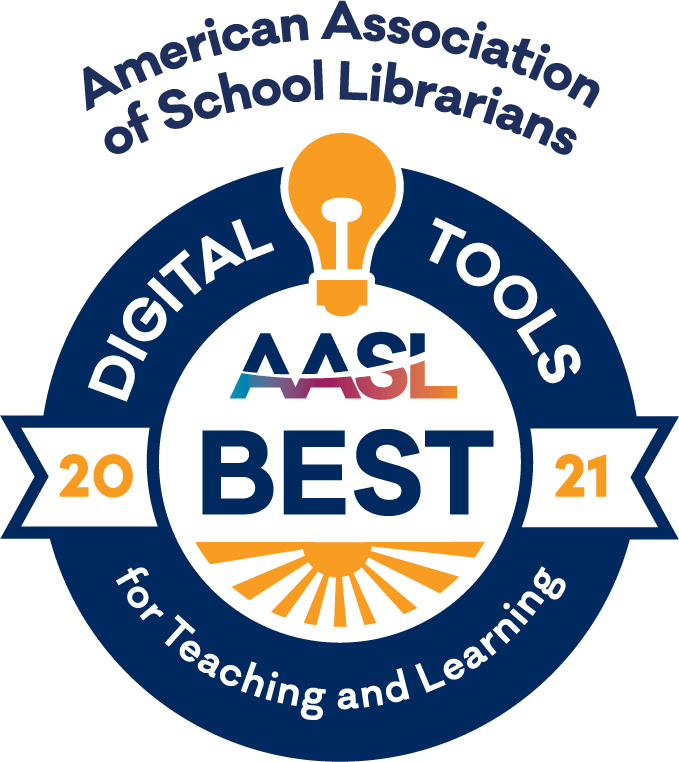
IMPACT & AWARDS
The C&C curriculum materials have been taught in many schools across the country with positive reported results. In addition, the Center on Media and Child Health conducted a study in 2017 to determine whether the middle school curriculum was effective with students. The study concluded that the curriculum ”succeeded at its primary goal of educating middle-school children about how copyright affects them as they create, acquire, and share digital media” as well as at “helping students understand that copyright applies and is relevant to their own creative endeavors, not just commercial media.” The study also reported that “[s]tudents found the material new and relevant.” A summary of the study findings is available here. The full study report is here.
REPEAT WINNER! AASL 2024 Best Digital Tools for Teaching and Learning
From the American Association of School Librarians, AASL’s Best Digital Tools are recognized for fostering qualities of:
-
-
-
- Innovation/Creativity
- Active Participation
- Collaboration
- User-Friendly
- Encourages Exploration
- Information/Reference
-
-
WINNER! AASL 2021 Best Digital Tools for Teaching and Learning
PROJECT HISTORY
The Copyright and Creativity curricula available here were initially developed by the Internet Keep Safe Coalition (iKeepSafe), an education nonprofit founded to promote online safety. iKeepSafe created the lessons between 2014 and 2016 with funding support from the Center for Copyright Information (CCI), a collaboration between Internet Service Providers (ISPs) and leading members of the media and entertainment industries. CCI was formed to educate consumers about the importance of copyright protection and to help consumers find appropriate ways to enjoy digital content.
iKeepSafe employed a rigorous development process to ensure that its curriculum materials would be accurate, balanced, age-appropriate, and relevant to the education community. This included significant review, input, and involvement by independent educators, academic copyright experts, and online civil liberties advocates. The professional development videos were also developed by iKeepSafe with production assistance from Creative Future, a coalition focused on promoting the value of creativity in the digital age.
In 2017, iKeepSafe transferred these materials to the Internet Education Foundation (IEF) with the goal of reaching a wider audience. IEF is a nonprofit whose mission includes educating the public about Internet-related issues and encouraging coalitions of corporations, industry associations, and public interest groups to work together on educational outreach projects.
LICENSING & FEEDBACK
These materials are licensed through a Creative Commons Attribution 4.0 International License. A copy of this license is available here. For uses after July 31, 2017, licensees should provide attribution to both iKeepSafe and the Internet Education Foundation.
C&C welcomes feedback on these materials, particularly from educators. In addition, information about which schools are using the materials would greatly assist C&C’s ability to continue to make these resources available free of charge. To provide substantive feedback or to inform C&C about schools that are using these resources, please use this link.




